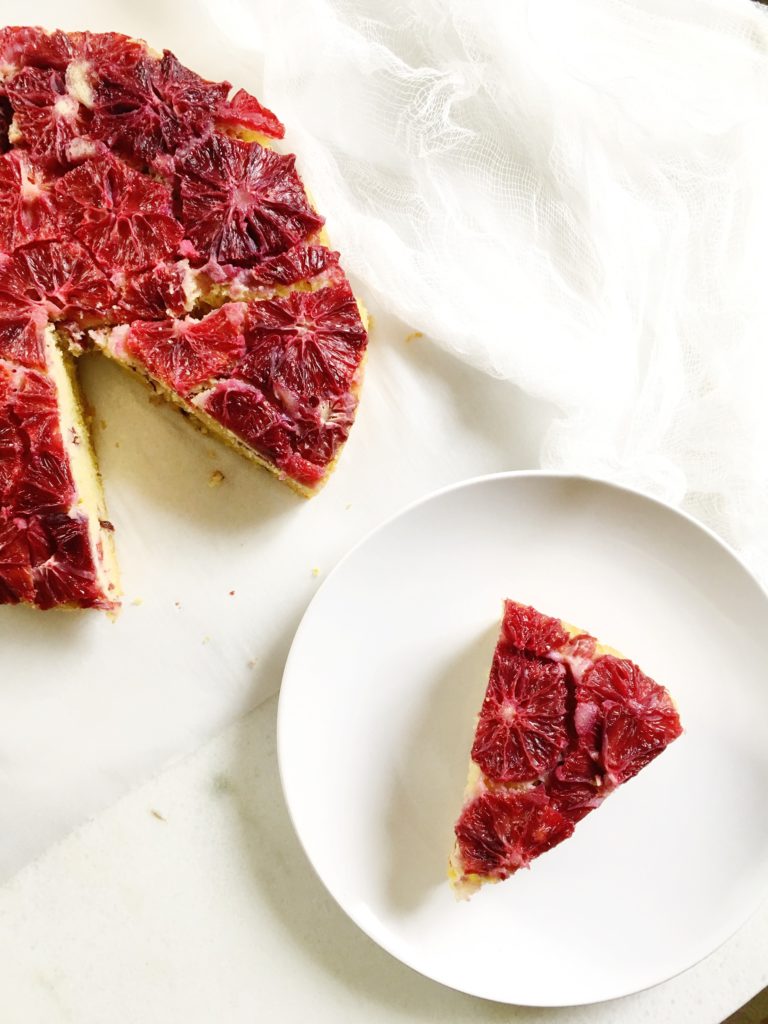
I was lucky enough to spend last winter at the Huntington in San Marino, California. Just east of Los Angeles, the Huntington grounds, which unfurl over 120 glorious acres, include a library, archives, art collections, and botanical gardens. The gardens, in particular, are extraordinary: the cacti and succulents make the Desert Garden look like a surrealist painting, the Chinese Garden is the largest outside of China, and the Japanese Garden features a beautiful red-orange bridge and hundreds of bonsai trees. As an academic, it gave me joy that such a paradise is dedicated to books, art, and learning.
But my most enduring memory of my time at the Huntington was the approach to the library. Every morning, under perfectly sunny skies, I would drive my little car down a long, winding driveway that was lined by every kind of citrus tree imaginable: lemons, limes, grapefruit, and endless varieties of oranges. As January wore into February, the tree branches drooped further and further toward the ground, weighed down by their fruit.
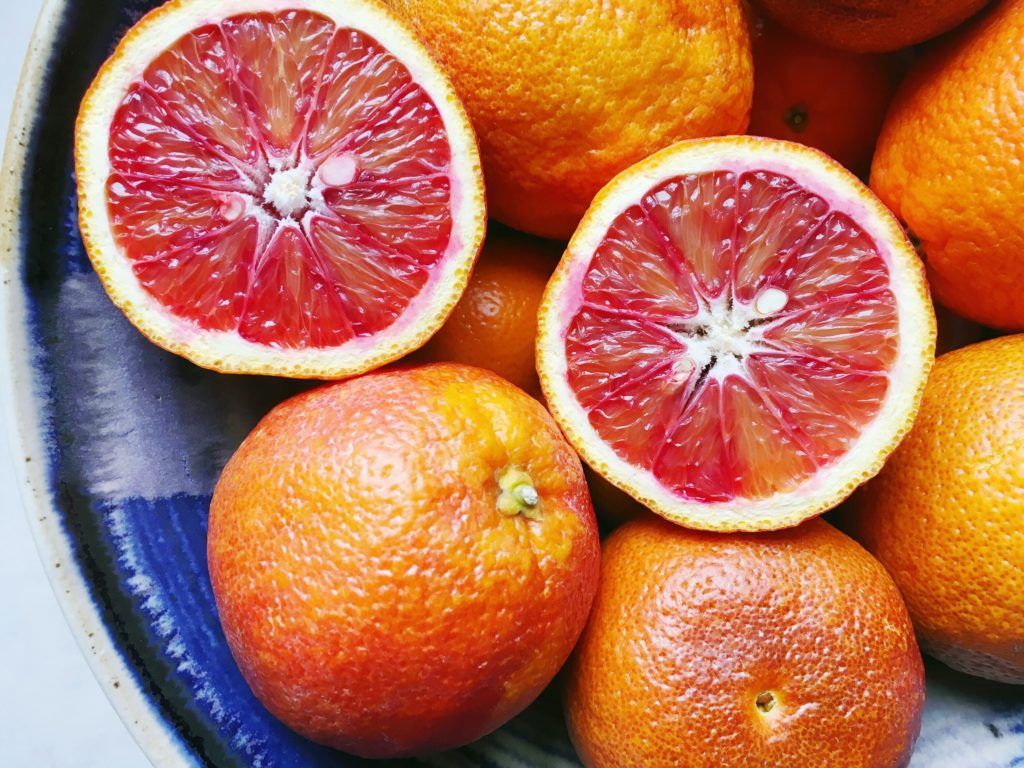
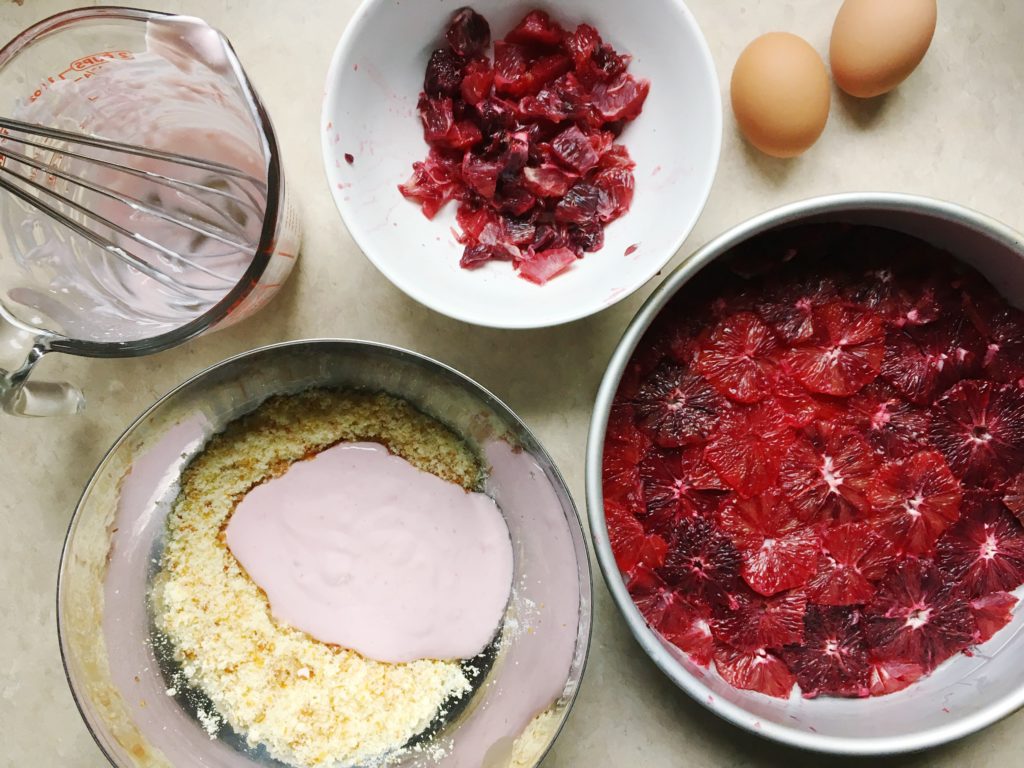 The oranges were a revelation— they tasted as happy and sun-drenched as I felt. This winter, sequestered back in the cold grey gloom of the East Coast, I have turned to citrus over and over again to add some color to my days (and my diet) and remind me that it is sunny somewhere, and may once again be sunny here.
The oranges were a revelation— they tasted as happy and sun-drenched as I felt. This winter, sequestered back in the cold grey gloom of the East Coast, I have turned to citrus over and over again to add some color to my days (and my diet) and remind me that it is sunny somewhere, and may once again be sunny here.
So, this cake. Think of it as a stunning, and far more exciting, alternative to banana or pumpkin bread. Like banana or pumpkin bread, I think this cake works best with afternoon tea or as a post-brunch dessert—though I snuck a slice or two for breakfast with coffee, as well. But unlike your standard banana bread, it’s an absolute knockout: look at that layer of red-purple blood oranges! And the flavor is delightful: tart and zingy from the citrus, with an unexpected savory note from the olive oil. Plus, you guys, the batter is pink.
I can’t think of a better antidote to the mid-winter doldrums.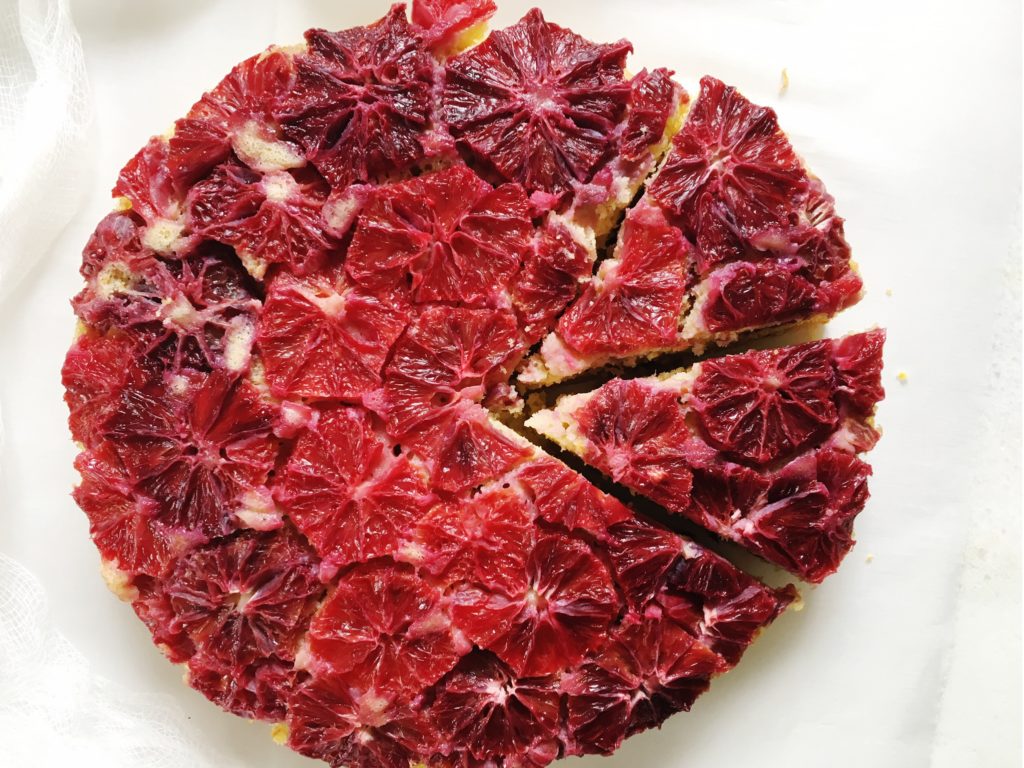
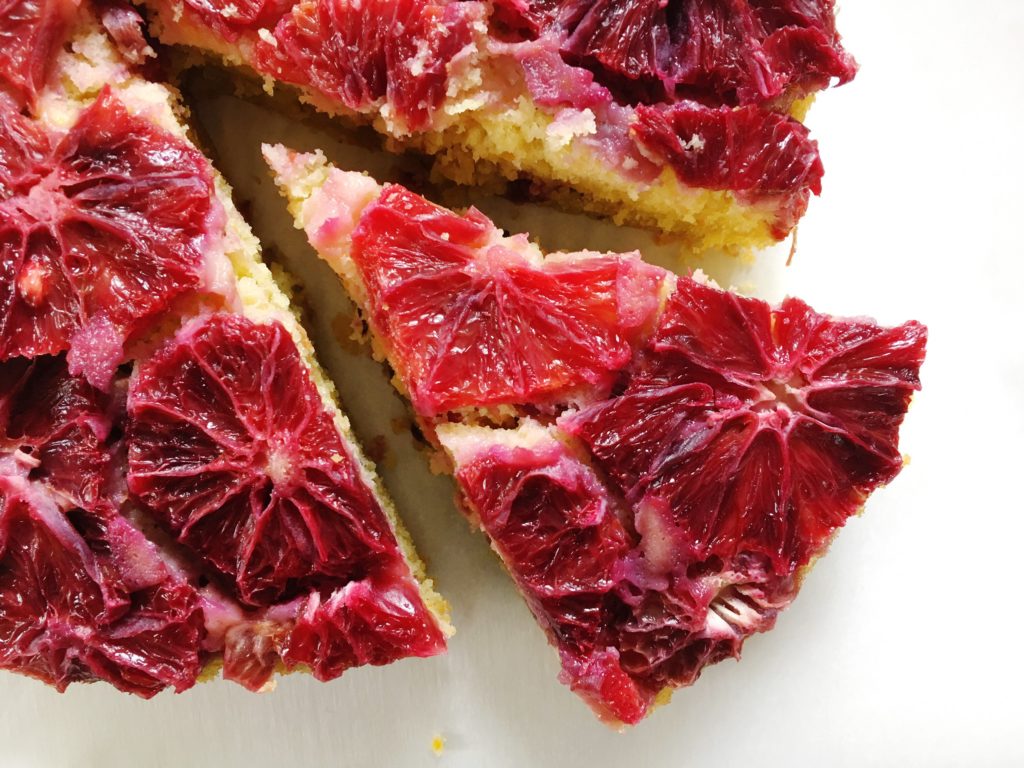
Previously:
One year ago: Kale Salad with Farro, Parmesean, Pine Nuts, and Dried Fruit (I will promote this recipe until I die)
Two years ago: Ontama Bukkake
And for my Australians:
Six months ago: Ratatouille
A year and a half ago: Crackly Banana Bread
Blood Orange and Olive Oil Afternoon Cake
Heavily adapted from the New York Times
Makes one 9-inch (23-cm) round cake
Ingredients
Butter, to grease pan
Parchment (a.k.a. baking) paper, to line pan
10 blood oranges (see notes, below)
3/4 cup (167g) sugar
less than 1/2 cup (125g) plain yogurt (I used 2% fat Greek yogurt)
3 eggs
1 3/4 cup (214g) flour
1 1/2 teaspoon (6g) baking powder
1/4 teaspoon (1g) baking soda
1/4 teaspoon (1g) kosher salt
2/3 cup (160ml) extra-virgin olive oil
Crème fraîche, to serve (optional)
Instructions
Preheat oven to 350F (176C). Thoroughly grease bottom and sides of a 9-inch round cake tin with butter. Line the bottom of the tine with a circle of parchment paper.
Zest 3 of the oranges. Place zest in a bowl with the sugar. Set aside.
Cut the peel off of the very bottom and very top off of 6-7 of the oranges. (Start with 6, because depending on the size of your oranges, you may have one leftover.) Place one of the cut sides on a cutting board. Then, using a sharp knife, cut down vertically along the sides of the orange, following the curve of the fruit, to remove the peel and the white pith. Repeat with the remaining five oranges. Then slice the oranges horizontally into 1/8-inch- to 1/4-inch- (.3 to .6cm) thick rounds.
Arrange the slices in the lined cake pan. You don’t want them overlapping, but you want as little negative space as possible, since batter will seep through the holes, making it look slightly less stunning. (You can use small segments to fill in little holes.) This is finicky work, but the result is so pretty, so keep up the good work!
Next, repeat the same peel- and pith-removal process on 2 more oranges. Remove the center pith bit, then chop the oranges so that no piece is larger than about 1/4-inch (.6cm) thick. Set aside.
Halve the last orange and squeeze its juice into a liquid measuring cup. You’ll have about 1/4 cup (60mL). Add yogurt to the juice in the measuring cup until you have a very scant 2/3 cup (156mL)—maybe about a tablespoon under 2/3 cup. Pour mixture into bowl with sugar and zest. Add eggs and whisk well.
In a big bowl, whisk together flour, baking powder, baking soda and salt. Gently whisk wet ingredients into dry ones. Switch to a spatula and fold in olive oil a little at a time. Fold in the chopped-up orange segments. Gently scrape batter into pan and smooth top.
Place pan in oven and bake for 32 to 34 minutes. A toothpick in the middle will come out clean at about 30 minutes, but you want to let it go for a few extra minutes, until it is dark golden on top, to ensure that it’s cakey, not soggy. Just watch it carefully through the oven door in those last four minutes to ensure it doesn’t burn.
Remove pan from oven and let cool for 10-15 minutes. Then, place a cooling rack on top of the pan. Hold onto the cooling rack and pan and flip the cake upside down onto the cooling rack. Peel off the parchment paper. Slice and serve with a dollop of crème fraîche—which is optional, but really takes this over the top.
I kept this covered, on my counter, at cool room temperature. Upon reflection, it probably would have been safer to keep it in the fridge, though since I finished it in two days, it didn’t matter. You do you!
Notes
Oranges: The number of oranges you will need will depend on how big each orange is. I needed about 6 and a quarter smallish ones to cover the bottom of my 9″ cake pan. I am recommending buying 7 for the bottom of the pan, plus the 3 that go in the cake, just to make sure you have enough.
Other pan sizes: I did not try making this in a loaf pan. If you were to try, you would need fewer oranges to cover the bottom of the pan. You would also need to bake the cake for much longer—the original New York Times recipe called for 55 minutes for a 9″x5″ loaf pan.
Thank you for another inspiring and delicious recipe! I wasn’t able to find blood oranges at my usual stores, so I substituted with grapefruits and valencia oranges. The results were beautiful and fragrant, albeit a bit soggy at first given the extreme amount of juice in these california citruses and my lazy knife skills. I ended up baking my cake an extra 10 minutes with the fruit side up to dry things out a bit and get that beautiful golden color on it. I’m sure if I had cut the decorative slices thinner and cut the fruit pieces that get folded into the batter to their appropriate sizes, it would have yielded more favorable results on the first try. Excited to make a second attempt soon. 🙂 xoxo